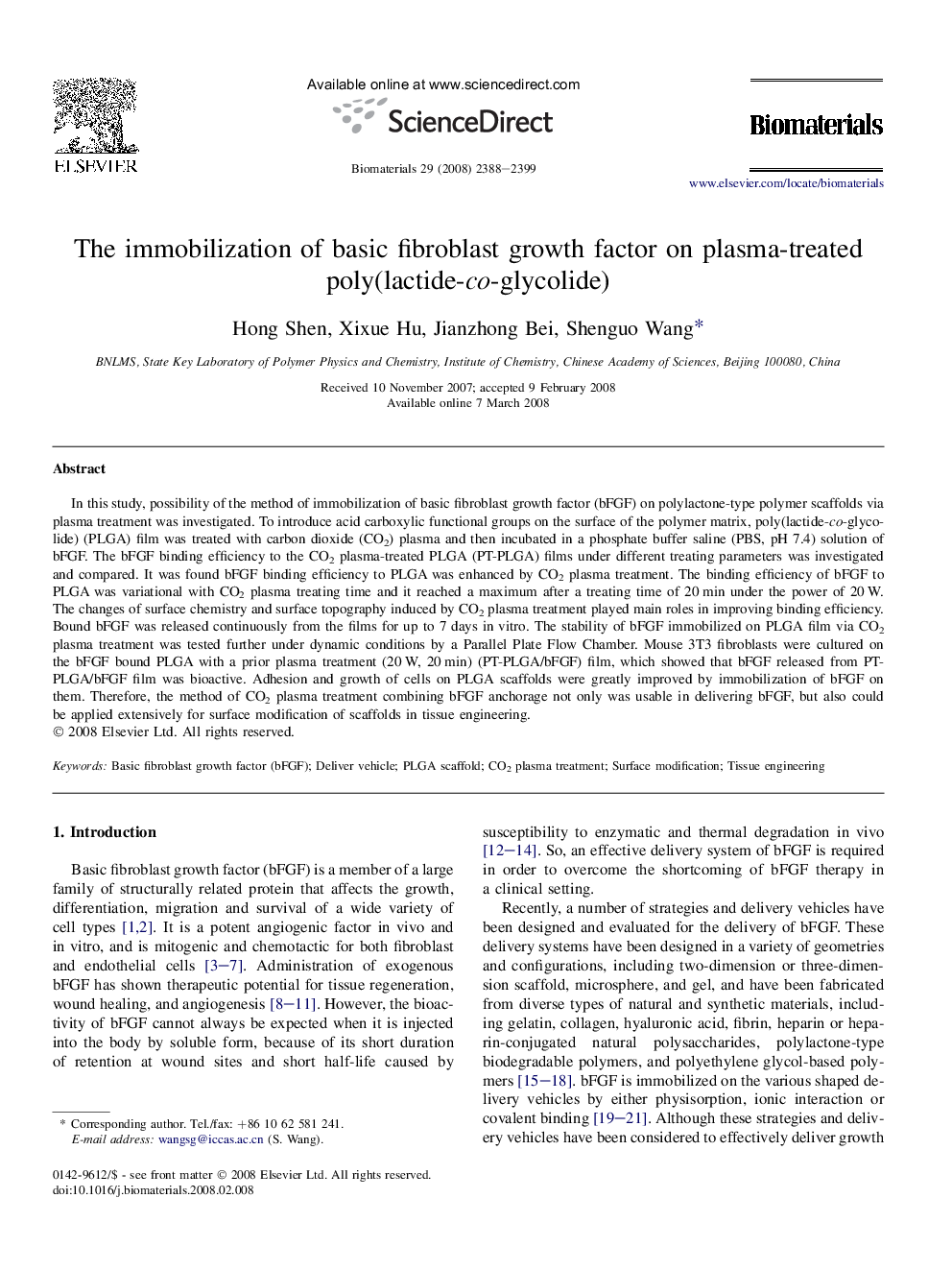| Article ID | Journal | Published Year | Pages | File Type |
|---|---|---|---|---|
| 10127 | Biomaterials | 2008 | 12 Pages |
In this study, possibility of the method of immobilization of basic fibroblast growth factor (bFGF) on polylactone-type polymer scaffolds via plasma treatment was investigated. To introduce acid carboxylic functional groups on the surface of the polymer matrix, poly(lactide-co-glycolide) (PLGA) film was treated with carbon dioxide (CO2) plasma and then incubated in a phosphate buffer saline (PBS, pH 7.4) solution of bFGF. The bFGF binding efficiency to the CO2 plasma-treated PLGA (PT-PLGA) films under different treating parameters was investigated and compared. It was found bFGF binding efficiency to PLGA was enhanced by CO2 plasma treatment. The binding efficiency of bFGF to PLGA was variational with CO2 plasma treating time and it reached a maximum after a treating time of 20 min under the power of 20 W. The changes of surface chemistry and surface topography induced by CO2 plasma treatment played main roles in improving binding efficiency. Bound bFGF was released continuously from the films for up to 7 days in vitro. The stability of bFGF immobilized on PLGA film via CO2 plasma treatment was tested further under dynamic conditions by a Parallel Plate Flow Chamber. Mouse 3T3 fibroblasts were cultured on the bFGF bound PLGA with a prior plasma treatment (20 W, 20 min) (PT-PLGA/bFGF) film, which showed that bFGF released from PT-PLGA/bFGF film was bioactive. Adhesion and growth of cells on PLGA scaffolds were greatly improved by immobilization of bFGF on them. Therefore, the method of CO2 plasma treatment combining bFGF anchorage not only was usable in delivering bFGF, but also could be applied extensively for surface modification of scaffolds in tissue engineering.
